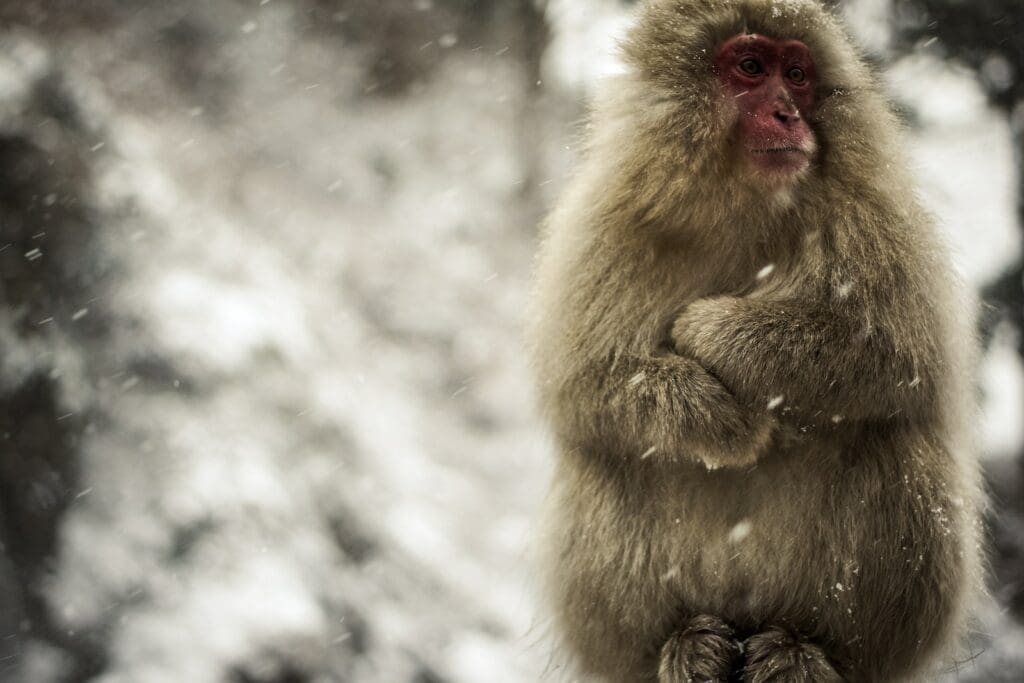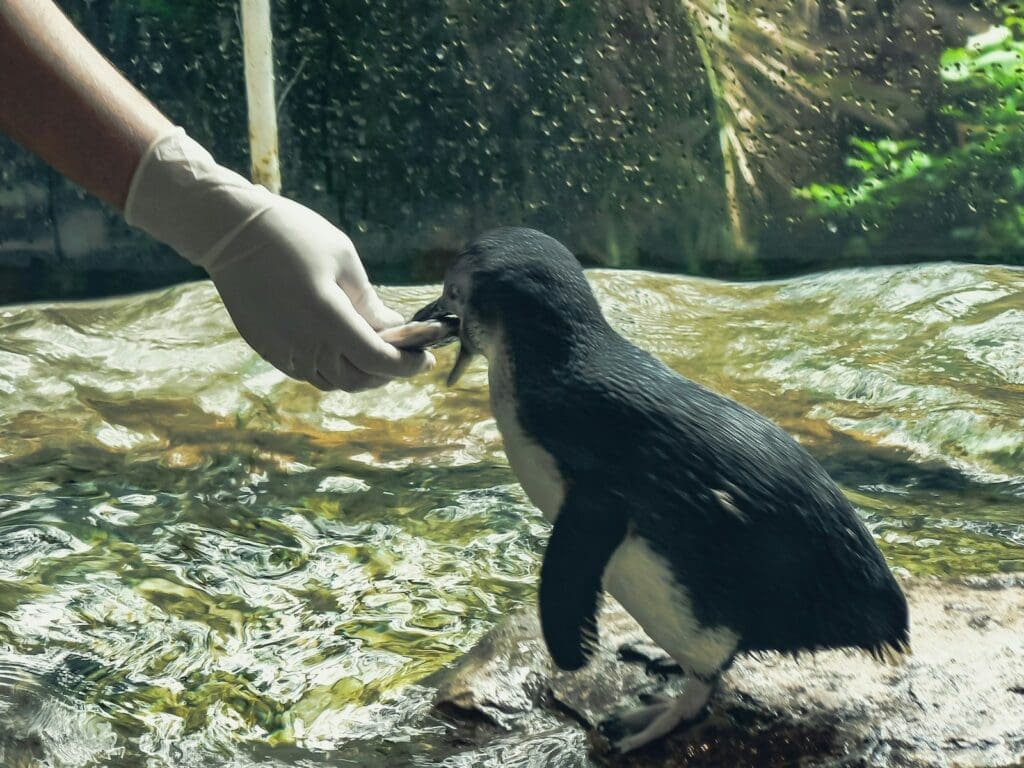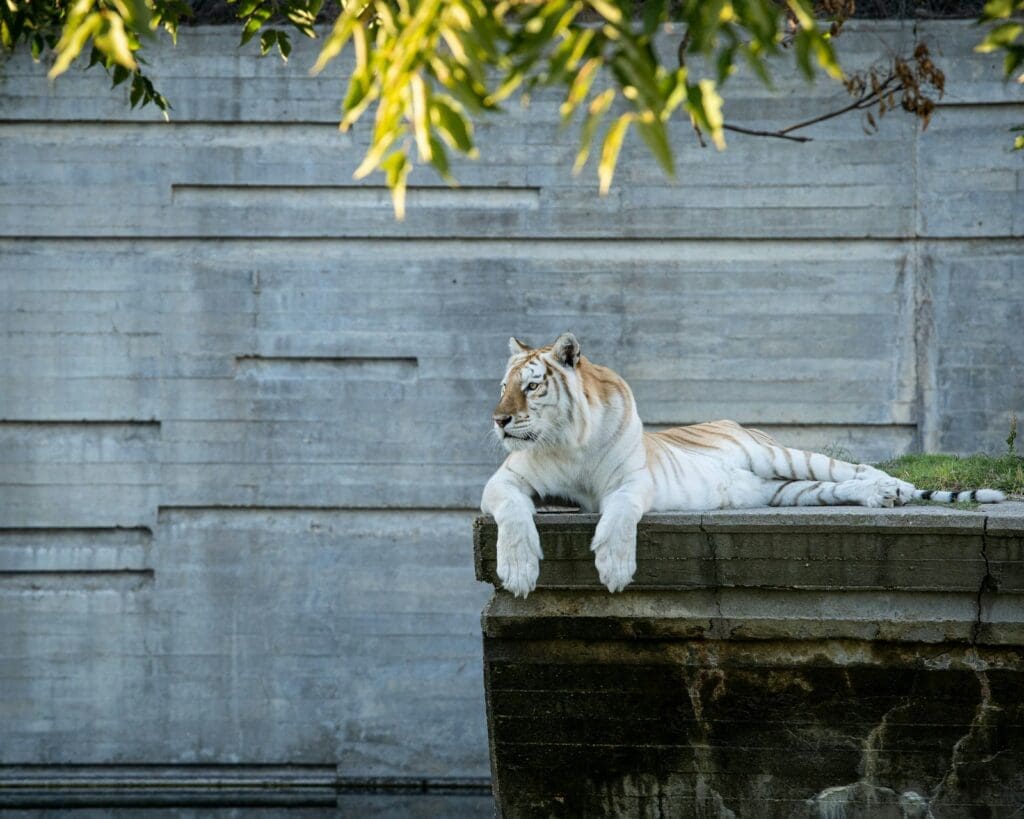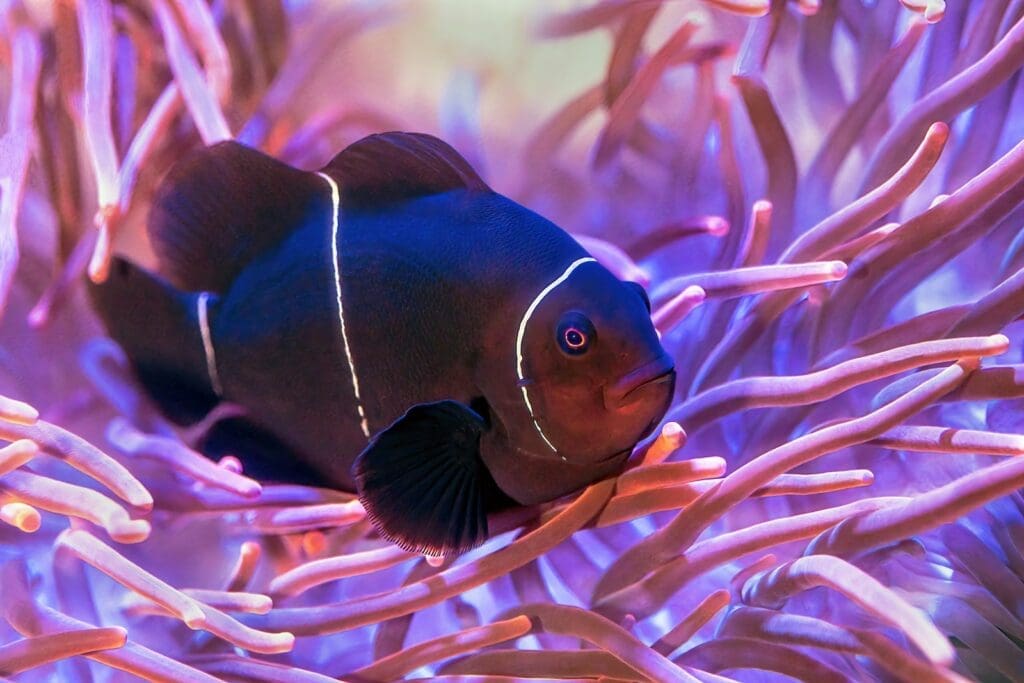
Ensuring Optimal Health in Cold Months
Winter in Texas presents a unique set of challenges and opportunities for zookeepers who are tasked with ensuring the health and wellness of their animals. As temperatures drop, the care strategies employed by these professionals become crucial to maintaining the comfort and survival of species that originate from a vast array of climates. Zoos in Texas are responsible for creating environments that replicate the animals’ natural habitats as closely as possible, despite the season’s unpredictable weather patterns that can range from mild to extremely cold conditions.
Specialized care during the winter months can include various adaptations, such as the provision of heated enclosures or the introduction of warming devices to ensure the animals remain at a comfortable temperature. For instance, Dallas Zoo makes certain their residents never get too cold, closely monitoring the forecast and adjusting care accordingly. Meanwhile, dietary adjustments and physical health inspections become even more important as activity levels and metabolic needs change with the colder weather.
Ensuring the well-being of animals throughout the colder season is a testament to the dedication and ingenuity of zoo staff. Activities and management approaches are thoughtfully planned out, taking into consideration each species’ unique needs, such as providing creatures like elephants with daily showers to check on their skin’s condition while also offering them a chance to cool down, no matter the season. This attention to detail in animal healthcare represents the commitment to animal welfare and species conservation, ensuring that despite the chill of the winter season, their animals continue to thrive.
Winter Weather Preparations
Zoos in Texas adopt rigorous strategies to ensure the safety and warmth of animals during winter weather. Cold climate demands imply that both animals and staff are adequately prepared for potential severe conditions.
Anticipating Winter Storms
Zoos meticulously monitor weather forecasts to predict winter storms. Heated enclosures are key to maintaining a safe environment for animals, especially those not native to cold climates. Zoos implement additional measures such as:
- Utilizing insulation techniques for enclosures.
- Providing extra bedding materials, like hay or straw, enhancing the comfort and warmth for animals such as Shasta the cougar at the Houston Zoo.
- Increasing food intake for animals to help them build a layer of fat that serves as natural insulation.
- Zoo staff prepares by stocking up on essential supplies and feed, ensuring no interruption in care amidst snow and freezing temperatures.
Emergency Protocols and Equipment
Detailed emergency protocols are in place to address power outages and extreme cold snaps, with generators ready to supply backup electricity. The zoo’s critical areas, including animal shelters and veterinary clinics, are prioritized for continuous power to maintain necessary heat levels. In preparation, zoos:
- Equip facilities with industrial-grade generators.
- Regularly test all emergency equipment to confirm operational status.
- Position heaters strategically within enclosures and critical zones.
- Assign dedicated staff to monitor animal well-being and equipment functionality throughout the storm.
- Stockpile essentials such as fuel for generators and additional heating elements to counteract any temporary loss of electricity.
By integrating these strategies, Texas zoos work to create a resilient environment that protects the inhabitants against the harshness of winter weather.
Animal Shelter and Habitats
Zoo and sanctuary facilities in Texas prioritize the provision of secure and climate-controlled environments to safeguard the welfare of animals during winter months. These efforts are vital for species that do not naturally endure cold weather, such as reptiles, amphibians, and certain birds.
Indoor Accommodations
Zoos and wildlife sanctuaries take extra precautions to ensure that all animals, particularly cold-blooded species like reptiles and amphibians, have access to indoor accommodations during extreme winter conditions. Indoor habitats are equipped with specialized insulation to prevent the cold from penetrating the living spaces. This is especially critical when temperatures drop suddenly, as can happen during unexpected winter storms. Overnight, animals are often moved inside to protect them from icy conditions that could result in a dangerous drop in their body heat.
Maintaining Appropriate Temperatures
Maintaining appropriate temperatures is essential for the health and comfort of zoo animals, particularly in winter. Heat sources, such as heat lamps and heated rocks, are installed in habitats to provide a reliable and consistent warmth source. For birds and other warm-blooded animals, indoor spaces are temperature-controlled to simulate their natural environments as closely as possible. This allows the animals to regulate their body temperature effectively, despite the cold outside. Sensitive temperature monitoring ensures that any fluctuations are quickly detected and corrected, providing a stable and suitable environment for the animals’ well-being.
Nutrition and Feeding Strategies
Ensuring optimal nutrition and proper feeding strategies for zoo animals is crucial, especially during the colder winter months in Texas. Specific adjustments to diets and water accessibility can make a significant difference in maintaining the wellbeing of animals in varying temperatures.
Adjusting Diets for Cold Weather
During cold weather, the nutritional needs of zoo animals may change. Many species require an increase in calorie intake to help maintain body heat. For instance, carnivorous animals might need a higher portion of meat, which provides dense energy resources. On the other hand, herbivores can benefit from additional hay or fiber-rich pellets which are metabolized more slowly, producing more sustained heat. Some animals, like primates, may prefer a variety of fruits that offer the necessary vitamins and can be served at room temperature to encourage eating despite the cold.
Feeding strategies should incorporate frozen treats for animals that need to be stimulated mentally, like felines or bears, which can mimic the act of breaking ice to reach food in the wild. For reptiles and birds, the food temperature is vital, as they require warmth to properly digest their meals; therefore, their meals should never be frozen.
Providing Sufficient Water Access
Hydration remains a top priority in winter just as much as in the warmer months. Water sources should be kept ice-free to encourage drinking. Implementing water heaters or thermal troughs can prevent water from freezing. Zookeepers must also regularly check to ensure that water dispensers are functioning properly and have not become blocked by ice or debris. Pools generally used by animals such as penguins or otters may need to be adjusted to maintain a temperature that is both safe and comfortable for these species, as well as to prevent the water from turning into ice.
For some species, incorporating water into their food is another strategy to increase hydration. Ingredients such as watermelon and cucumber can be effective hydrating food supplements, providing a dual role as both nutrition and hydration. In some instances, these can also be given as frozen treats, serving the added benefit of enrichment during the winter months.
Physical and Mental Health Care
In Texas zoos, maintaining optimal physical and mental health care for animals during winter months involves tailored enrichment activities and vigilant monitoring for stress due to weather changes.
Enhancing Winter Enrichment Activities
During the colder months, zookeepers often introduce new enrichment strategies to stimulate both the physical and psychological well-being of animals. They may provide species-specific toys that encourage natural behavior and mental engagement. For instance, primates may receive puzzle toys that challenge them and promote problem-solving skills. Moreover, animals with winter coats might be given ice treats or snow to interact with, which not only serves as a novel experience but also assists in temperature regulation.
Monitoring for Weather-Related Stress
Zoo professionals remain attentive to signs of weather-related stress in animals, particularly during the unpredictable Texas winter. They closely observe physical indicators such as panting or redness, which might suggest an animal is too warm. They also monitor for changes in behavior that could indicate psychological stress. Preventative measures are in place to ensure that every animal’s habitat provides the necessary warmth or cooling elements, and adjustments are made promptly to address any signs of discomfort.
Species-Specific Considerations
In the colder months, zoos in Texas must adapt their care protocols to address the unique needs of various animal classes. Mammals, reptiles, amphibians, and birds all require different strategies to maintain their wellbeing during winter.
Caring for Mammals in Winter
Mammals at Texas zoos receive special care to combat the chill of winter. For species with thinner coats, additional warmth is provided with hay for bedding and even blankets in some cases to ensure comfort. Carnivores such as big cats are closely monitored for their nutritional needs, as their dietary requirements can increase during winter. On the other hand, animals like bears that naturally experience torpor or hibernation have their nutrition carefully decreased and managed to mimic natural seasonal cycles.
Special Attention to Reptiles and Amphibians
Reptiles and amphibians are particularly sensitive to temperature changes due to their ectothermic nature. In winter, it is essential to provide controlled heat sources, like heated rocks or enclosures, to maintain body temperature. Zoos, such as the Texas State Aquarium, ensure these species have access to environments that simulate their natural habitats, including mud and water features at appropriate temperatures.
Avian Care During Cold Snaps
Birds, despite their feathers, can be susceptible to cold weather. Aviaries in Texas take steps to offer sheltered areas where birds can escape the cold. Increased high-energy nutrition is often necessary to enable birds to maintain their body heat. For species that are particularly warmth-loving, access to heated perches or enclosures becomes a priority during a cold snap.
Communication and Education
Effective communication and education are fundamental to ensuring the wellbeing of zoo animals during the harsh winter months in Texas. Zoo facilities prioritize keeping the public informed and educated about their practices through various mediums and programs.
Informing the Public via Social Media
Zoos in Texas actively use social media platforms like Facebook and Twitter to provide breaking news and updates concerning animal care during winter. These platforms are crucial for real-time engagement with the community, allowing zoos to disseminate information quickly and widely. For instance, the Dallas Zoo utilizes its social media channels to share how they protect over 2,000 animals against cold spells, maintaining transparency and trust with their audience.
Educational Programs on Winter Wellness
Furthermore, educational initiatives such as the Animal Enrichment Program at the Fort Worth Zoo illustrate hands-on approaches for community members to learn about species-appropriate behaviors and wellness in colder weather. By offering educational presentations, facilities like the Houston SPCA’s Wildlife Center of Texas extend their reach beyond the zoo’s boundaries, fostering greater awareness of animal welfare during winter through interactive and educational encounters.
Local Zoo Highlights
The wellbeing of animals during the winter season is a top priority for Texan zoos. Innovative measures are adopted by zoos in Dallas, Austin, and Fort Worth, ensuring animal care teams can provide a safe and comfortable environment amid the cold.
The Dallas Zoo Approach to Winter Care
The Dallas Zoo implements a meticulous process to protect its inhabitants from the harsh winter elements. They provide heated shelters and adjust the diets to suit the colder weather. The team also monitors each species for any cold-related stress or discomfort.
Austin Zoo’s Winter Weather Solutions
In response to winter’s chill, the Austin Zoo focuses on maintaining optimal conditions for all its residents. Specialized shelters and heat sources are part of their strategy, alongside enrichment activities to engage the animals mentally as well as physically.
The Fort Worth Zoo’s Adaptation Strategies
Adaptation is key at the Fort Worth Zoo, where animals are provided with custom care tailored to their needs. Management of both indoor and outdoor environments is crucial, as detailed by their dedication to enhancing habitats that can be enjoyed year-round. The zoo’s process and team efforts have received recognition, reflecting their commitment to animal wellness during winter.
Advanced Care and Rescue Operations
Advanced Care and Rescue Operations in Texas involve meticulously coordinated efforts to ensure the safety and well-being of zoo animals, particularly during the more challenging winter months. These operations are critical for emergency animal rescue and the management of exotic and vulnerable species.
Emergency Animal Rescue and Relocation
When emergencies arise, dedicated teams are dispatched to rescue animals that are injured, orphaned, or in distress due to environmental challenges like sudden temperature drops or storms. The process is systematic: First, teams assess the situation and stabilize the animals using specialized equipment. Then, animals are safely transported using rescue crates to ensure minimal stress and disruption. The rescue operations make use of real-time data, expert veterinary care, and coordinated ground and logistical support to act swiftly in the interest of the affected wildlife.
Exotic and Vulnerable Species Management
The management of exotic and vulnerable species demands a nuanced approach, especially in times of a crisis like a sudden fish kill event. Facilities caring for these animals are equipped with advanced climate control systems to replicate native habitats and minimize stress during colder periods. Staff members, with specific expertise in exotic animal care, closely monitor and create detailed plans catered to individual species’ needs. This includes diet, environmental enrichment, and preventive medical care. The operations for these species are designed with the utmost attention to detail, from the temperature of the water for aquatic animals to the substrate used for terrestrial creatures.
Rescue operations for both emergency situations and exotic species management are crucial components of the overarching animal care programs in Texas, reflecting a commitment to the preservation of wildlife regardless of the season.





